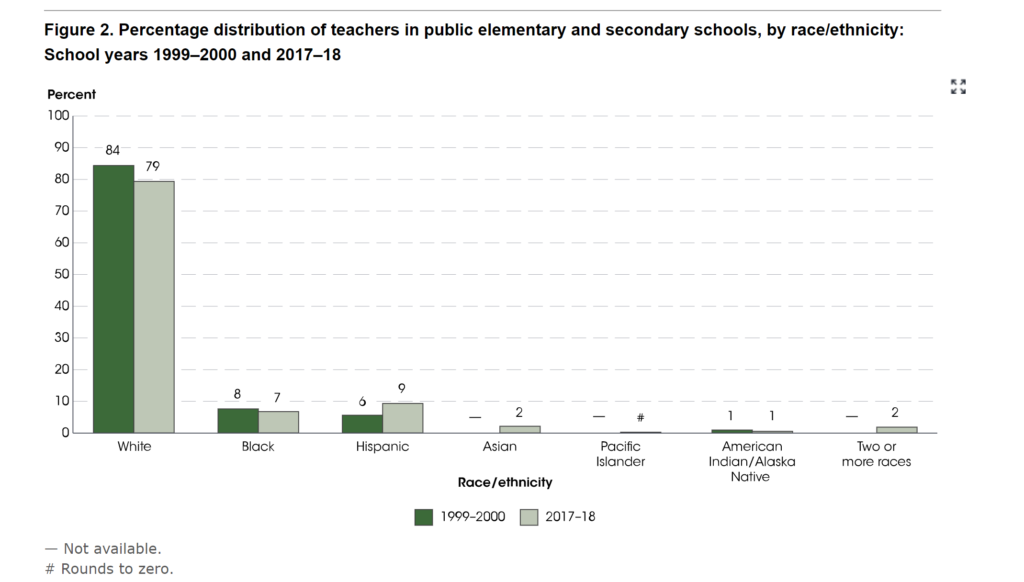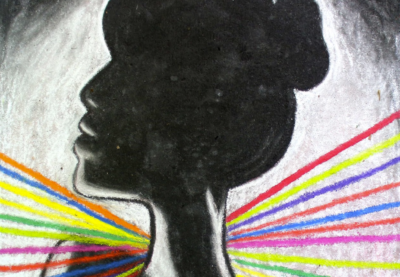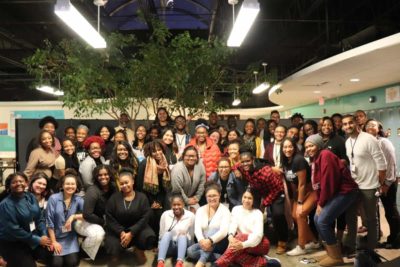
The absence of Black teachers in K-12 classrooms is no new phenomena, but it is surely a recurring issue. Data clearly indicates that teachers in our nation’s classrooms are not representative of students’ cultural and racial backgrounds.
America’s public schools are becoming increasingly diverse. Data for the fall of 2017 from the National Center for Education Statistics shows that there were 7.7 million Black students enrolled in public schools, or 15% of the student population. White students make up 48% of the student population, but white teachers still constitute 79% of the teaching population.

Impacts of Brown decision
Research has discussed the impacts of the Brown v. BOE decision that mandated desegregation. This case has been long-celebrated for its revolutionary intent, but the actual implications were devastating for the Black community.
In a historical examination of the impact, researcher Linda C. Tillman writes that “more than 38,00 Black educators in 17 southern and border states were dismissed from their positions” and that “the number of Black students who chose teacher education as a major declined by 66%” (p.286). Principals were demoted, stricter testing requirements were enacted, and Black teachers in white schools experienced being denigrated and belittled to name a few. The burden of desegregation had been placed on the Black community.
On being devalued
The Education Trust published a document sharing the narratives of teachers of color who’ve had experiences being undervalued. Teachers reported that they weren’t viewed as educated and constantly had their credentials questioned, which resulted in being passed over for professional advancement opportunities.
Similarly, there is research that shows in schools where Black teachers are in the minority, Black teachers reported feelings of not having their concerns addressed or professionalism recognized. Additionally, Black teachers are more likely to work in urban communities in schools with poor organization, resources, and leadership. This ultimately leads to higher attrition rates that are not directly related to the student population or teaching capacity, but contribute to the low presence nonetheless.
A solutions approach
We are all familiar with the commonly touted solutions to recruiting more teachers by way of alternative teaching programs and incentivized programs such as the North Carolina Teaching Fellows. While alternative teaching programs do in fact recruit more teachers of color, they also have higher attrition rates. Programs like the NC Teaching Fellows also bring in more teachers but participants are generally not from diverse backgrounds.
For instance, as a former NC Teaching Fellow, I was one of only eight Black people that were chosen for the program in the 2019 intake. Additionally, of the five universities that host the program, none of them are HBCU’s. According to College Factual, each of the institutions that are included are overwhelmingly white, with Elon University having the highest percent with a 80.6% white population. The bottom line is teachers of color are neither accessing nor experiencing satisfaction through these attempts.
The Black Teacher Project
So how do we really fix the problem? I suggest two promising models to both recruit and retain teachers of color in the field. The first is The Black Teacher Project (BTP), a program rooted in “racial affinity peer-spaces” with a mission to “sustain and develop Black teachers”.
Creator Micia Mosely is doing the work of creating safe spaces for Black educators to come together to unpack school experiences, fellowship, strategize, and empower each other to make positive changes in their schools and community. According to their second year 2018 annual report, 142 members enrolled and 100% of the final survey participants reported that they would recommend BTP as a support and tool for Black teachers.
Pathways 2 Teaching
Another promising model are Grow Your Own Teacher (GYO’s) programs using Margarito Bianco’s blueprint, Pathways2Teaching. Bianco wanted to create a program that targeted youth of color for recruitment into the profession within their surrounding communities.
With a focus on high school students from low-income communities and potential first-generation college students, the Pathways 2 Teaching program removes traditional barriers found in similar programs that limit enrollment. Enrolled 11th and 12th grade students have weekly field experiences, gain college readiness skills while earning college credits, and learn to become socially justice oriented critical educators. To date, the program has recruited over 450 students and expanded to six school districts.
Not only are skill development and racial-affinity goals of these programs, but so too is the development of leadership capacities. Participants are encouraged to critically examine policies and practices, advocating for equity at every turn. Having made minimal progress towards diversity in the teaching, these two programs are worthwhile.
A reminder: All students benefit from Black teachers
“You cannot be what you cannot see” is a quote with proverbial resonance and a myriad of implications with regard to how we inspire our children to pursue their dreams. Self-esteem and self-efficacy are key components that must be considered when discussing education and academic achievement.
Students are often aware of their self-worth and the value of those who look like them at a very young age. This awareness is a collective synthesis of various stimuli. If students are exposed to numerous mediums that portray people who look like them in a positive light — as leaders, heroes, protagonists — it directly impacts how much value they place in themselves and how much confidence they have in their capacity to be successful.
Black teachers specifically, and teachers of color in general, bring with them to the field the necessary multicultural representation and unique relatability to provide all students with a holistic educational experience. Not only will the self-efficacy, self-esteem, and academic performance of students of color improve, but increasing the amount of teachers of color can be the much needed introduction for white students to be exposed to Black individuals in traditional roles of leadership and professional expertise.
In a world that is constantly sending messages to Black folks that tell us we aren’t worthy, that Black lives don’t matter, Black students need to see themselves represented in the educators they encounter when they walk into a school building or log into a class session. As we continue to exist in the midst of two pandemics, racism and COVID-19, it is high time that we begin to confront the important issues head on and as it relates to education. Black teacher recruitment and retention should be at the top of the list.
Recommended reading



